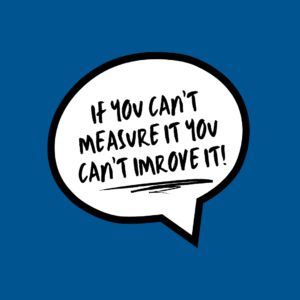When it comes to measuring business performance, KPIs play an essential role
Key performance indicators (KPIs) are metrics used to evaluate the success of a business or organisation. They are an essential tool for business owners and managers to helping you track progress, identify areas for improvement, and make informed decisions.
However, using KPIs effectively requires more than just selecting a few metrics and tracking them blindly. To get the most out of KPIs, you need to select the right ones, use them in the right way, and interpret them in context. There are many resources out there if you want to build more knowledge around KPI’S but for now, let’s look in a little more detail about how you can use KPIs effectively to grow and scale your business.
1.Define your business goals and objectives
Before selecting KPIs, you need to have a clear understanding of what you want to achieve as a business. This means defining your goals and objectives. Your KPIs should align with your business objectives and help you track progress towards achieving them.
For example, if your goal is to increase revenue, your KPIs might include metrics such as sales growth, customer acquisition, and customer retention. If your goal is to improve customer satisfaction, your KPIs might include metrics such as net promoter score (NPS), customer churn rate, and customer feedback.
2.Select relevant KPIs
Once you have clearly defined your business objectives, you can select KPIs that are relevant to your goals. Your KPIs should be specific, measurable, and actionable. It goes without saying, that they should also be relevant to your industry and business model.
For example, if you run an ecommerce business, you might track metrics such as conversion rate, average order value, and cart abandonment rate. If you run a SaaS business, you might track metrics such as monthly recurring revenue (MRR), customer lifetime value (CLV), and churn rate.

3.Track KPIs regularly
To get the most out of your KPIs, you need to track them regularly. This means setting up a system to collect and analyse data on a regular basis. You might use a dashboard or reporting tool to track your KPIs in real-time.
Tracking your KPIs regularly will help you to identify trends and patterns in your business performance. You can use this information to make informed decisions and take action where necessary.
4.Interpret KPIs in context
While KPIs are useful for tracking progress towards your goals, they should be interpreted in context. This means understanding the factors that influence your KPIs and the broader business environment.
For example, if your sales growth has slowed down, you might need to look at factors such as changes in market demand, competitive pressu
res, or internal processes. By interpreting your KPIs in context, you can identify the root cause of any issues and take action to address them.
5.Use KPIs to inform decision-making
Finally, KPIs should be used to inform decision-making. Your KPIs should provide insights that help you to make informed decisions about your business. For example, if your customer churn rate is high, you might need to invest in customer retention programs or improve your product or service offering.
Using KPIs effectively requires a strategic approach to selecting, tracking, and interpreting metrics. By aligning your KPIs with your business objectives, selecting relevant metrics, tracking them regularly, interpreting them in context, and using them to inform decision-making, you can leverage KPIs to drive business success.





